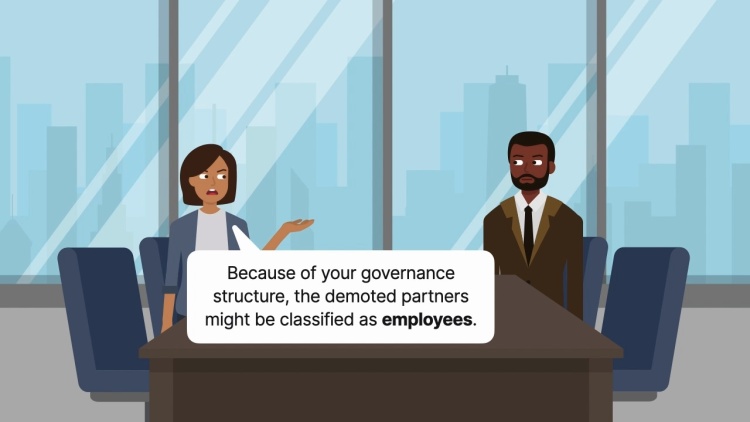Equal Employment Opportunity Commission v. Sidley Austin Brown & Wood
United States Court of Appeals for the Seventh Circuit
315 F.3d 696 (2002)
- Written by Heather Whittemore, JD
Facts
Sidley Austin Brown & Wood (Sidley) (defendant) was a law firm with over 500 partners. In 1999 Sidley demoted 32 equity partners (collectively, the demoted partners) to counsel or senior-counsel positions. The Equal Employment Opportunity Commission (EEOC) (plaintiff) opened an investigation into the demotions to determine whether Sidley violated the Age Discrimination in Employment Act (ADEA). The ADEA protected employees from age-based discrimination by employers. The ADEA did not, however, protect employers. The reasoning behind this differential treatment lay in the ability of employers to protect themselves from discrimination by participating in management decisions. Sidley argued that before their demotions, the demoted partners were employers under the ADEA because they were partners in the law firm. As partners, the demoted partners shared in the firm’s profits and were liable for the firm’s debts. The EEOC believed that the demoted partners may have been employees because of Sidley’s governance structure. Sidley was controlled by an executive committee made up of 36 partners. The committee had the power to fire, demote, and promote partners, as well as alter their compensation structures. None of the demoted partners were on the executive committee. To determine whether the demoted partners were employers or employees, the EEOC issued a subpoena to Sidley to produce relevant documents related to whether the ADEA covered the demoted partners and whether Sidley discriminated against the demoted partners. Sidley did not produce all the requested documents. The EEOC asked the district court to enforce the subpoena, and the district court ordered Sidley to comply with the subpoena. Sidley appealed.
Rule of Law
Issue
Holding and Reasoning (Posner, J.)
Concurrence/Dissent (Easterbrook, J.)
What to do next…
Here's why 899,000 law students have relied on our case briefs:
- Written by law professors and practitioners, not other law students. 47,000 briefs, keyed to 994 casebooks. Top-notch customer support.
- The right amount of information, includes the facts, issues, rule of law, holding and reasoning, and any concurrences and dissents.
- Access in your classes, works on your mobile and tablet. Massive library of related video lessons and high quality multiple-choice questions.
- Easy to use, uniform format for every case brief. Written in plain English, not in legalese. Our briefs summarize and simplify; they don’t just repeat the court’s language.





